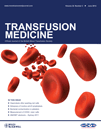
TRANSFUSION MEDICINE
Scope & Guideline
Connecting professionals through groundbreaking research in transfusion medicine.
Introduction
Aims and Scopes
- Clinical Practice in Transfusion Medicine:
The journal emphasizes clinical studies and reports on transfusion practices, including guidelines for safe transfusion, management of transfusion reactions, and patient blood management strategies. - Transfusion Safety and Quality Assurance:
Research focusing on improving the safety of blood transfusions, including studies on pathogen inactivation, blood collection practices, and the implementation of electronic safety systems. - Immunohematology and Blood Group Genetics:
Exploration of genetic factors affecting blood transfusion, such as alloimmunization, blood group discrepancies, and the genetic basis of blood group antigens. - Emerging Technologies in Blood Transfusion:
Investigation into new technologies and methodologies for blood collection, processing, and transfusion, including the use of predictive modeling and automated systems. - Policy and Ethical Considerations:
Discussions surrounding blood donation policies, ethical considerations in transfusion practices, and the sociocultural aspects influencing donor behavior.
Trending and Emerging
- Patient Blood Management (PBM):
An increasing focus on PBM strategies that emphasize minimizing blood transfusions while optimizing patient outcomes is evident, reflecting a shift towards more individualized care. - Impact of COVID-19 on Blood Donation and Transfusion Practices:
Research related to the effects of the COVID-19 pandemic on blood supply, donor behavior, and transfusion practices has surged, highlighting the need for adaptive strategies in crisis situations. - Technological Innovations in Blood Transfusion:
Emerging technologies, including automated systems for blood component processing and decision support systems for transfusion practices, are gaining importance in improving safety and efficiency. - Genomic Research in Transfusion Medicine:
There is a growing trend towards exploring genetic factors in transfusion practices, such as genetic screening for blood donors and the implications of genetic variations on transfusion outcomes. - Transfusion-related Immunology:
Studies examining the immunological responses to transfusion, including alloimmunization and transfusion-associated immunomodulation, are becoming increasingly relevant in understanding patient responses.
Declining or Waning
- Traditional Blood Component Therapy:
Studies focusing solely on conventional blood transfusion practices without consideration for newer patient blood management strategies are becoming less common as the field moves towards more evidence-based approaches. - Epidemiological Studies on Rare Blood Types:
Research on rare blood types and their epidemiology appears to be waning, possibly due to a shift towards more pressing issues in transfusion medicine such as safety and efficiency. - Outdated Diagnostic Techniques:
There has been a noticeable decrease in studies focusing on older diagnostic techniques for blood typing and crossmatching, as newer technologies and methodologies gain prominence.
Similar Journals

Blood Transfusion
Connecting Research with Clinical Practice in Hematology.Blood Transfusion is a leading journal in the fields of Hematology, Immunology, and Medicine, published by SIMTIPRO SRL in Italy. With its ISSN 1723-2007, the journal has established a significant presence in the academic community, as evidenced by its positioning within the Q2 category in Hematology and Medicine (miscellaneous) and Q3 in Immunology and Allergy for 2023. Notably, it ranks #38 out of 137 in the Hematology category, showcasing its impactful contributions to research and practice. Operating under a traditional publishing model, this journal provides valuable insights into advances in blood transfusion science, ultimately aimed at enhancing patient care and outcomes. Spanning from 2003 to 2024, the scope of Blood Transfusion covers a wide range of topics related to hematological and immunological research, making it an essential resource for researchers, healthcare professionals, and students engaged in these critical fields.

TRANSFUSION MEDICINE REVIEWS
Pioneering research for better blood health.TRANSFUSION MEDICINE REVIEWS is a prestigious journal dedicated to the advanced study of transfusion medicine and its related fields, published by W B SAUNDERS CO-ELSEVIER INC. With an outstanding reputation, it boasts an impressive impact factor and consistently ranks in the top quartile (Q1) across multiple categories, including Biochemistry (Medical), Clinical Biochemistry, and Hematology. Researchers will find valuable insights through its extensive coverage of pertinent topics, with a focus on the integration of clinical practices and laboratory science. While the journal does not currently offer open access, its content remains accessible through various institutional subscriptions, ensuring that vital information is available to the global scientific community. With a continuous publication history from 1987 to 2024, TRANSFUSION MEDICINE REVIEWS serves as a vital resource for academics, healthcare professionals, and students who seek to stay abreast of the latest research findings and clinical practices in transfusion medicine.

Indian Journal of Hematology and Blood Transfusion
Transforming Blood Health: Where Research Meets PracticeIndian Journal of Hematology and Blood Transfusion, published by SPRINGER INDIA, serves as a leading platform for disseminating original research, reviews, and case studies in the field of hematology. With an ISSN of 0971-4502 and E-ISSN 0974-0449, this journal has been instrumental in advancing knowledge from 2000 to 2024, providing insights into critical issues surrounding blood disorders and transfusion practices. Currently ranked in the Q3 category for Hematology for 2023, it reflects a commitment to high-quality scientific content amidst a competitive landscape where it ranks 97/137 in Scopus for Medicine - Hematology, placing it in the 29th percentile of its peers. The journal primarily addresses a diverse readership, including researchers, healthcare professionals, and students, aiming to foster innovation and collaboration within the field. Although it operates under a subscription model, access options for individual articles and institutional subscriptions ensure that valuable research is disseminated widely to enhance medical practice and education in hematology.

GEMATOLOGIYA I TRANSFUZIOLOGIYA
Transforming Insights into Lifesaving PracticesGEMATOLOGIYA I TRANSFUZIOLOGIYA is an esteemed journal published by the MINISTERSTVO ZDRAVOOKHRANENIYA in the Russian Federation, focusing on the vital fields of hematology and transfusion medicine. With a rich history dating back to its inception in 1983, the journal plays a significant role in disseminating critical research and advancements in these areas, particularly relevant given the evolving landscape of medical science. As a recognized publication, it is indexed in Scopus and holds a Q4 category ranking in Hematology for 2023, reflecting its niche but important contributions to the field. Researchers, healthcare professionals, and students can look forward to a variety of peer-reviewed articles that not only address contemporary issues but also pave the way for innovative practices in hematology. Although it does not currently offer open access, the journal remains a valuable resource for those seeking to stay informed about the latest findings and developments.
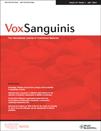
VOX SANGUINIS
Shaping the Future of Hematological ScienceVOX SANGUINIS is a distinguished peer-reviewed journal in the fields of Hematology and Medicine, published by Wiley, a leading academic publisher based in the United Kingdom. With a rich history dating back to its inception in 1952, this journal has consistently provided a platform for innovative research and insightful reviews, advancing the understanding of blood-related disorders and therapies. As evidenced by its robust performance—ranking #57 out of 137 in Scopus for Medicine in Hematology and holding a Q2 classification in both Hematology and miscellaneous Medicine categories—VOX SANGUINIS is recognized for its significant contributions to the scientific community. This journal serves as a vital resource for researchers, professionals, and students alike, fostering knowledge exchange and collaboration within the field. With its ongoing commitment to quality and integrity, VOX SANGUINIS continues to shape the future of hematological research well into 2024 and beyond.
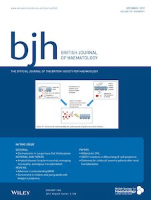
BRITISH JOURNAL OF HAEMATOLOGY
Pioneering Insights in Blood Disorders and TreatmentsBritish Journal of Haematology, published by Wiley, is a leading journal in the field of hematology, with an impressive impact factor reflecting its significance in the medical research community. Established in 1955, the journal has consistently contributed to advancing knowledge in hematology, currently holding a prestigious Q1 ranking in the Scopus category of Hematology, placing it in the top 18% of the field. The journal encompasses a broad range of topics including clinical and laboratory aspects of blood disorders and hematological malignancies, making it an essential resource for hematologists, researchers, and healthcare professionals. With its commitment to publishing top-tier research and clinical studies, the British Journal of Haematology plays a critical role in shaping treatment approaches and improving patient outcomes worldwide. Please note that this journal does not offer Open Access options, ensuring that published content is rigorously curated for quality and relevance.
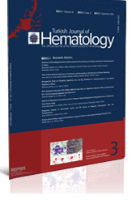
Turkish Journal of Hematology
Fostering collaboration in hematology research and clinical practice.Turkish Journal of Hematology is an esteemed publication dedicated to advancing the field of hematology, producing influential research since its inception in 1999 under the auspices of GALENOS PUBL HOUSE. With an Open Access model, it facilitates widespread dissemination of knowledge, allowing researchers, clinicians, and students to stay abreast of the latest developments in blood disorders and treatments. With an ISSN of 1300-7777 and an E-ISSN of 1308-5263, the journal holds a commendable position in the academic community, evidenced by its 2023 Q3 ranking within the hematology category and its standing at #80 out of 137 in the Scopus database, placing it in the 41st percentile. Covering a wide scope of topics within hematology, this journal serves as a critical resource for disseminating innovative research and clinical practices pertinent to the ongoing challenges faced in this vital area of medicine. With its continuous publication until 2024, Turkish Journal of Hematology remains a beacon for enhancing the understanding and treatment of hematological conditions within the Turkish and global medical communities.

Anemia
Exploring breakthroughs in anemia research for global impact.Anemia is a distinguished open-access journal published by HINDAWI LTD, focusing on the intricate and vital field of hematology and related disciplines. Since its inception in 2010, this journal has been dedicated to advancing our understanding of blood disorders, with a particular emphasis on anemia, through the dissemination of high-quality research that is freely accessible to a global audience. The journal's evolving scope from its founding through 2024 embodies its commitment to include the latest breakthroughs and methodologies in cell biology and hematological research. With its presence in prestigious databases and a tiered ranking that places it in the Q3 category in Hematology and Q4 in Cell Biology as of 2023, Anemia serves as an invaluable resource for researchers, clinicians, and students alike. The journal is indexed with a respectable position in Scopus, ranking 52 out of 137 in Hematology, highlighting its growing influence in the medical and scientific communities. With continued emphasis on open access, Anemia not only fosters collaborative research but also ensures that crucial findings reach those who need them most, enhancing educational outcomes and clinical practices worldwide.
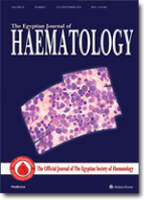
Egyptian Journal of Haematology
Fostering Collaboration for a Healthier Tomorrow in HematologyThe Egyptian Journal of Haematology, published by WOLTERS KLUWER MEDKNOW PUBLICATIONS, stands as a pivotal resource in the field of hematology, particularly within the context of Egypt and the broader Middle Eastern region. This journal is dedicated to disseminating high-quality research that explores the latest advancements in blood disorders, hematologic malignancies, and transfusion medicine. With a focus on original research, case studies, and reviews, it aims to provide a comprehensive platform for hematologists, researchers, and healthcare professionals to enhance their understanding and management of hematological conditions. Although it is not an open-access journal, the rigorous peer-review process ensures that only the most impactful studies are published, contributing to the journal's reputation in the academic community. The Egyptian Journal of Haematology serves as an essential tool for advancing knowledge, improving clinical outcomes, and fostering collaboration among experts in the field.

BLOOD REVIEWS
Advancing the frontiers of Hematology and Oncology.BLOOD REVIEWS is a highly regarded journal published by Churchill Livingstone, specializing in the fields of Hematology and Oncology. With an impressive Q1 ranking in both disciplines and placing in the top 10% of its peer categories according to Scopus metrics, it provides an essential platform for the dissemination of cutting-edge research and reviews pertaining to blood disorders and cancer treatment. Since its inception in 1987 and continuing through 2024, the journal has established itself as a cornerstone for healthcare professionals, researchers, and students who seek to advance their understanding of hematologic and oncologic topics. While not an open-access journal, BLOOD REVIEWS retains a reputation for delivering high-quality, peer-reviewed articles that foster dialogue and innovation within the scientific community. For those in the United States and beyond, the journal serves as a vital resource, housed at the Journal Production Department in Edinburgh, Scotland, ensuring accessibility and a global reach in its critical academic contributions.